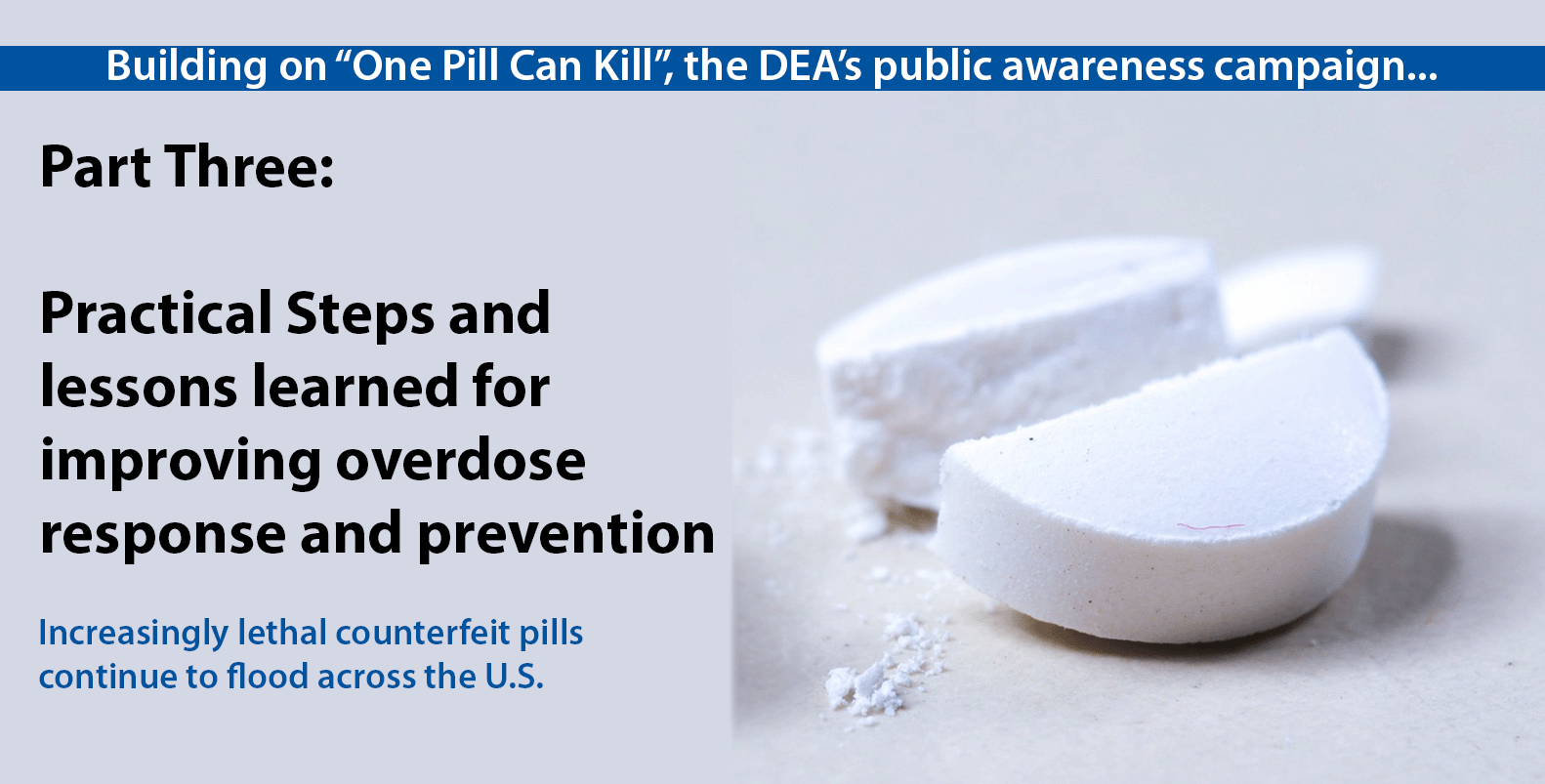
Can a Small MIH Team Tackle a Huge Drug Problem?
How a small and dedicated MIH team maximizes their reach and impact in spite of limited resources.
This is the third article in our three-part series building on “One Pill Can Kill”, the DEA’s public awareness campaign about the growing overdose problem in America. To close out the series, we highlight Lexington County EMS, and the lessons they’ve learned tackling difficult challenges to help the people who need it most.
Lexington County, South Carolina, covers 760 square miles and is home to 300,000 people. The county has long struggled with substance abuse, and in 2021 Lexington County EMS started a community paramedicine program – just in time to catch a surge in opioid overdoses caused by both the pandemic and an influx of lethal counterfeit pills. Assistant Chief Tanee Thomas-Tedford and her team review EMS overdose records and follow up with the overdose survivors, helping them enter recovery and avoid overdosing again. They have many inspiring success stories, including a person who successfully entered recovery after more than a dozen overdoses, and who eventually become a full-time coach with a community recovery center.
However, achieving these successes is far from easy. Like many young community paramedicine programs, the team at Lexington County EMS is relatively small and limited in their resources. Lexington County itself also lacks public resources: outside of urbanized areas, public transportation is extremely limited, and according to Thomas-Tedford, “In our county … [we lack] homeless shelters, or places where they can get help for mental health, or drugs and alcohol.”
To overcome this, Lexington County EMS seeks out partnerships: as Thomas-Tedford says, “Networking is most important.” Their partnership with the Courage Center, a local recovery organization, illustrates this perfectly: Thomas-Tedford’s community paramedics can count on certified recovery coaches from the Courage Center to accompany them on house calls, and can help overdose victims overcome transportation and communication barriers by connecting them to Courage Center programs that provide resources like gas cards or prepaid cell phones. For overdose victims with no place to go, Lexington County EMS can leverage the Courage Center’s network of contacts to find a rehab clinic or shelter.
Networking is most important to overcoming limited resources
Safety is another challenge facing Lexington County’s community paramedics. The people they visit rarely trust the police, which puts the paramedics in a bind: either they get turned away from many of the homes they visit, or they go into potentially dangerous situations without support. Thomas-Tedford’s team has opted to work without a police presence, but they still cooperate with law enforcement as much as they can. They run background checks on every address they visit, and if an address has a large amount of recent police activity, they consult with the narcotics enforcement team to learn about the dangers they might face when making a house call – as well as to avoid clashing with actions the police are taking. To further ensure the community paramedics’ wellbeing, when a team goes out for a round of house calls, their itinerary, radio ID and emergency contact info are distributed to the on-duty dispatch supervisors and EMS shift commanders. Everyone also enables location sharing on their work phone. Finally, every member of the team has the right to veto a house call if they feel unsafe – a thankfully rare occurrence.
Still, community paramedic Austin Pace emphasizes the need to be vigilant and attentive. “Keeping your head on a swivel, and knowing what to look for based on experience, has probably been our biggest lesson learned … no matter how well you have safety considered and in place, there will always be something that will come up.”
Be as genuine as possible and be the same with everyone, or they will see right through it.
While taking these precautions, Lexington County EMS also stresses the need to see through the stigma surrounding overdose survivors. “I would definitely start with making sure that your employees are educated on the most recent techniques, recent verbiage, and have a mindset of what today’s substance misuser looks like – because it could be anybody,” says EMT Tiffany McCall. “Most of these people that are using substances have trauma issues and trust issues, so it’s very important that you’re consistent, and you’re honest, and you’re genuine.”
“Be as genuine as possible and be the same with everyone, or they will see right through it.” says Thomas-Tedford.
Thomas-Tedford’s team has learned many lessons since its start in 2019, and in order to implement them they’ve needed to stay flexible. They achieve that flexibility with HealthCall’s highly customizable toolset: their community paramedics create patient records with as much or as little detail as needed, they organize their patients using pre-made Monitoring Groups and personalized Custom Groups, and they plan follow-up steps for patients by creating Custom Tasks with variable priorities, due dates, and user assignments. HealthCall has also adapted to the team’s needs as they’ve grown, adding additional Monitoring Groups and expanding the options for how a paramedic in the field can be notified when a Custom Task is assigned to them. In addition, the team enjoys some peace of mind, as HealthCall provides secure data storage, tamper-proof patient notes, and a database of patient info that they can query whenever the need arises.
America’s growing overdose problem is certainly daunting, but the team of community paramedics at Lexington County EMS don’t shy away. They build partnerships with like-minded groups, practice layer upon layer of safety techniques, and seek out the latest training to help them establish genuine connections with those struggling with addiction. Their team stays flexible and learns from each new experience, seeking out better tools and workflows. There are countless people across the nation who still need help, but Thomas-Tedford’s team is making a difference – and they hope the lessons they’ve learned will help others do the same.
